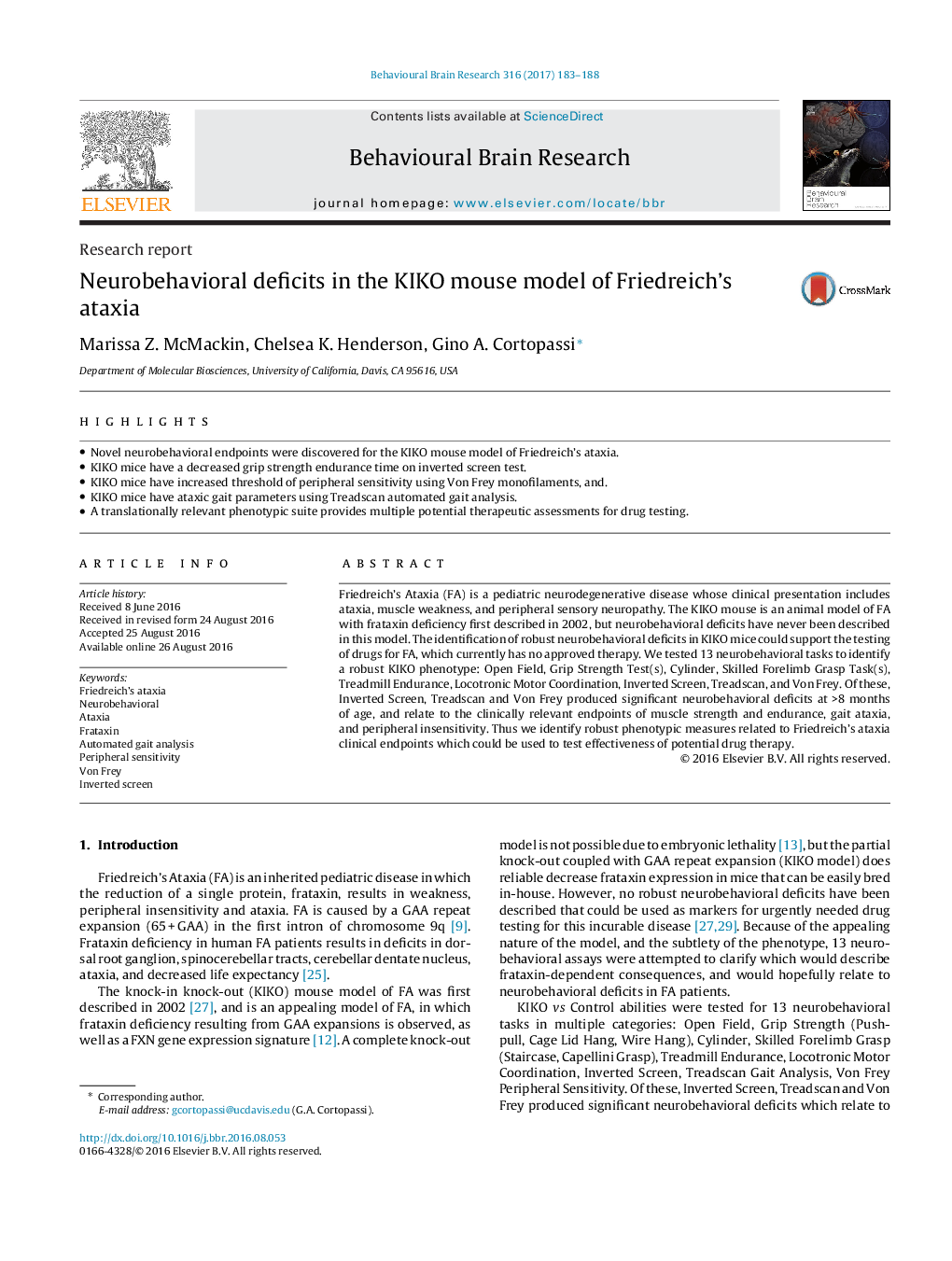| Article ID | Journal | Published Year | Pages | File Type |
|---|---|---|---|---|
| 4312012 | Behavioural Brain Research | 2017 | 6 Pages |
•Novel neurobehavioral endpoints were discovered for the KIKO mouse model of Friedreich’s ataxia.•KIKO mice have a decreased grip strength endurance time on inverted screen test.•KIKO mice have increased threshold of peripheral sensitivity using Von Frey monofilaments, and.•KIKO mice have ataxic gait parameters using Treadscan automated gait analysis.•A translationally relevant phenotypic suite provides multiple potential therapeutic assessments for drug testing.
Friedreich’s Ataxia (FA) is a pediatric neurodegenerative disease whose clinical presentation includes ataxia, muscle weakness, and peripheral sensory neuropathy. The KIKO mouse is an animal model of FA with frataxin deficiency first described in 2002, but neurobehavioral deficits have never been described in this model. The identification of robust neurobehavioral deficits in KIKO mice could support the testing of drugs for FA, which currently has no approved therapy. We tested 13 neurobehavioral tasks to identify a robust KIKO phenotype: Open Field, Grip Strength Test(s), Cylinder, Skilled Forelimb Grasp Task(s), Treadmill Endurance, Locotronic Motor Coordination, Inverted Screen, Treadscan, and Von Frey. Of these, Inverted Screen, Treadscan and Von Frey produced significant neurobehavioral deficits at >8 months of age, and relate to the clinically relevant endpoints of muscle strength and endurance, gait ataxia, and peripheral insensitivity. Thus we identify robust phenotypic measures related to Friedreich's ataxia clinical endpoints which could be used to test effectiveness of potential drug therapy.
